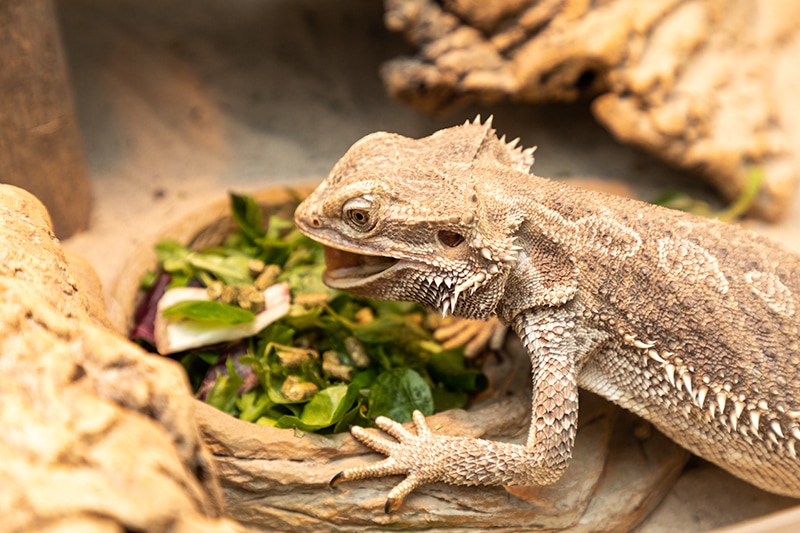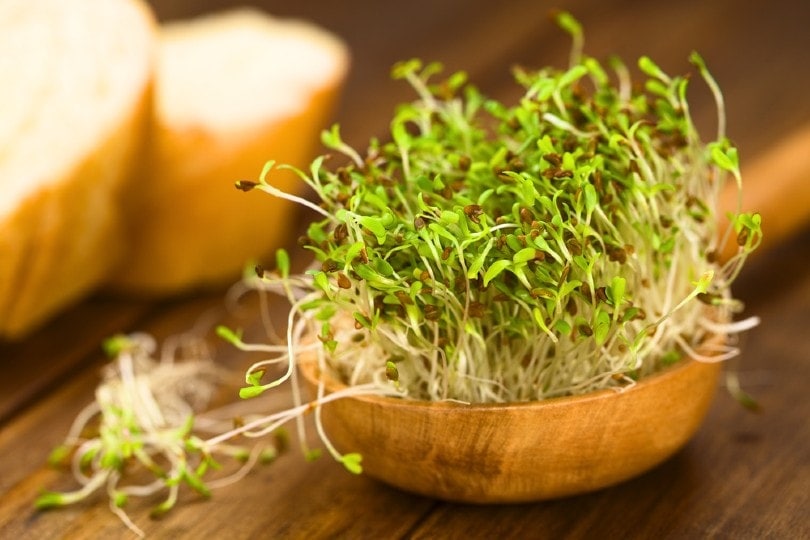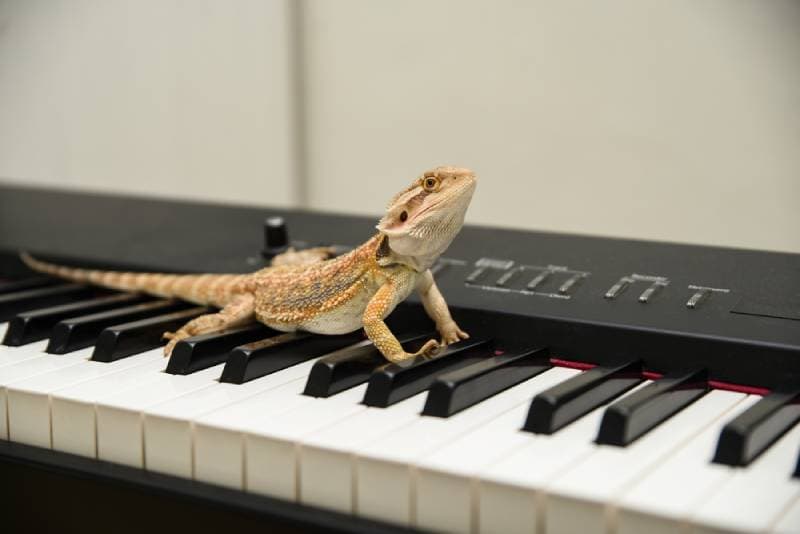How Often Do Bearded Dragons Shed? Vet-Reviewed Guide According to Age & Growth

Updated on
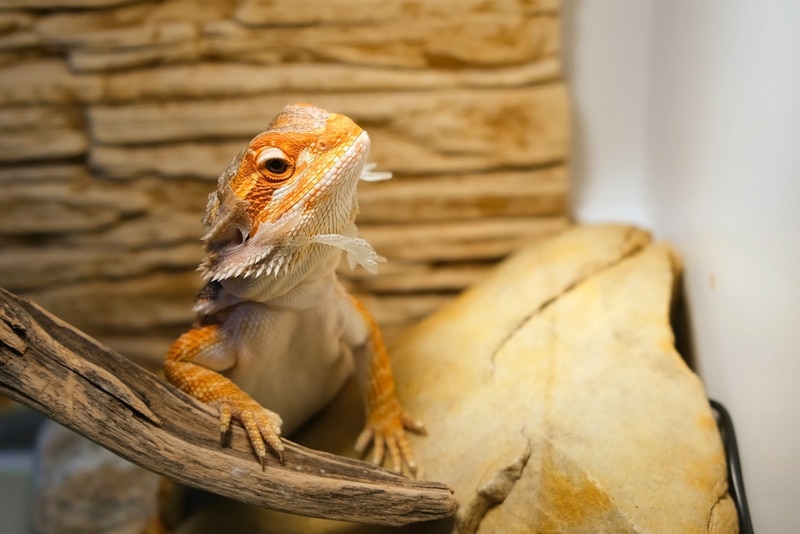
Bearded Dragons have hard skin that doesn’t stretch or grow with them. This means that as the Bearded Dragon grows, they outgrow their skin, which necessitates the shedding of the old skin and the growing of a new skin. Even once a Beardie reaches adulthood, their skin can become damaged and will need replacing to make sure that the Beardie has adequate physical protection and remains free from injury and illness. As such, Bearded Dragons shed skin throughout their lives, but while people shed their skin one cell at a time, the keratin-based skin of Beardies needs to be replaced in one go. This process is known as ecdysis in veterinary literature.
How often a Bearded Dragon sheds is dependent on the age of the animal and their metabolic rate. Young, healthy Beardies up to 6 months old will shed every week or two. This will slow to roughly every 2 or 3 weeks between the ages of 6 months and 12 months. And once the Beardie reaches maturity at about 18 months old, they will only be shedding about twice a year.
Why Do Bearded Dragons Shed?
Bearded Dragon skin is different from human skin. Human skin cells are shed individually, which means people don’t have to shed all of their skin in one go. Bearded Dragons have a harder skin that consists of keratin. The skin can’t break down in the same way as our skin does, and it needs to be shed in one go.
When they are young and growing, Bearded Dragons need to shed their old skin because it doesn’t stretch or grow, and their bodies effectively outgrow the skin on top. If they didn’t shed this tight layer of skin, it would constrict around parts of their body and lead to serious physical problems.
Even when Bearded Dragons are fully grown, and their bodies no longer expand, they still shed skin. This is because the skin becomes damaged and worn. Skin that constantly replaces itself, one cell at a time, is replenished over time, but the single layer of Bearded Dragon skin doesn’t replenish in this way and the skin doesn’t repair. Therefore, Bearded Dragon skin has to be replaced when it becomes damaged, which is why adult Beardies still shed.

How Often Do They Shed?
How often Beardies shed depends on their age. Very young Bearded Dragons are still growing and they can grow quickly, which means that the skin needs to be replaced quickly.
You can expect a young lizard to shed their skin every week or so until they reach the age of about 6 months old. At this stage, the Beardie will shed roughly every 2 weeks until they reach full maturity. At the age of 12 months, shedding will slow down, and when your lizard is 18 months and has reached full size, they will usually only undergo a shed every 6 to 9 months.
How To Ensure a Good Shed
Beardies need a moist, humid environment in which to be able to comfortably shed. They need a humidity level between 35% and 40% in their enclosure. This ensures a smooth shedding and mimics the seasonal humidity that usually accompanies their natural shedding time in the wild. It can also be beneficial to make sure there is a rock or log in the enclosure. Your Bearded Dragon will know when they are going to shed and will rub against this abrasive surface to help kickstart the shedding process and may use it if a shed gets stuck.
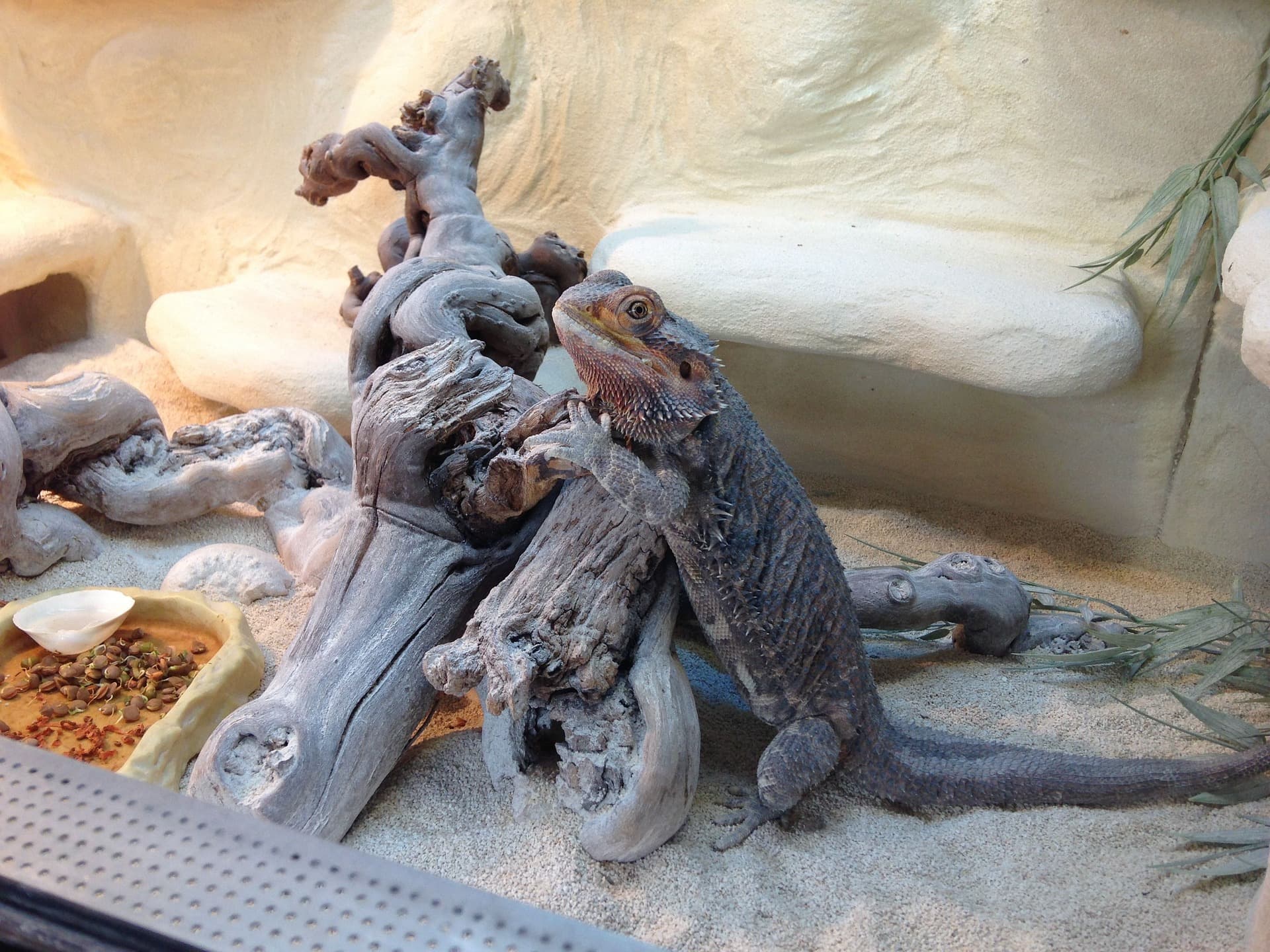
Signs of a Stuck Shed
Typically, it takes anywhere from a few days to 2 weeks for a shed to complete. If your Beardie still hasn’t shed their old skin by this time and you notice sections getting stuck, you may need to take action. Don’t attempt to pull the skin away, but do try misting the Beardie. You can also put them in a shallow bath of warm water. The lubrication of the water might help the skin move.
If this doesn’t help, you should take your lizard to a vet, ideally one that specializes in reptiles, and they will be able to help the process along.
Conclusion
Bearded Dragons are unique pets. One way in which they differ from pets like cats and dogs is that they shed their skin in one go, rather than replacing every skin cell individually. This means that you can expect to see a full or several parts of a shed skin in the enclosure and you will, at some point, see your Beardie with a semi-shed skin. Shedding is natural and can occur every week in young Beardies and even adults will shed once or twice a year as they replace damaged skin with fresh, new skin.
While a stuck shed is uncommon, assuming that you keep your Beardie in optimal conditions and especially with ideal humidity levels, it can occur and you will need to keep an eye on the shed because stuck skin can cause major physical problems.
Featured Image Credit to: Vadim Zakharishchev, Shutterstock


